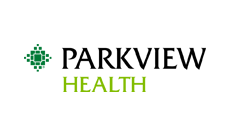Abstract
Presented at the 2024 Parkview Nursing Research Symposium.
Background: Shared governance is a structure for clinical nurses to have a voice in decisions regarding practice and the practice environment. It is imperative to have a model that is inclusive of all nurses and allows for decision-making and accountability related to nursing practice. It is essential that nurses are empowered to make decisions at the point of care related to patient care decisions. Objective: The purpose of this study was to assess current state of shared governance councils at Parkview Health. Method: Data was collected using the Index of Professional Nursing Governance (IPNG) version 3.0 and the Council Health Survey. The IPNG 3.0, is a reliable and valid tool containing 50 questions related to professional nursing governance with six subscales. The Council Health Survey instrument includes 25-items to assess council effectiveness at either the unit or system level [2]. The scale has the following three subscales: Structure, Activities, and Membership. Demographic data was also collected including current role in the organization. Descriptive statistics were calculated for all measures. Comparisons were made for IPNG 3.0 total score, IPNG 3.0 subscales and Council Health Activities and Membership subscales for current role, work location, and years in current role. For these comparisons, Kruskal-Wallis tests were conducted due to the non-parametric nature of IPNG 3.0 scores and Council Health Summary. Results: A total of 500 respondents had complete responses on the IPNG 3.0 and were retained for analyses. Nearly all respondents were female (95.2%), the modal age range was 30-39 years old, and 64.4% had a Baccalaureate Degree in Nursing. In their current role, 83.8% provided direct patient care and 66.0% worked full-time. On INPG-3, 68.3% of leaders responded with scores meeting the threshold for shared governance; whereas 60.5% of non-direct care employees and 55.6% of direct care employees met this threshold. Scores for some of the subscales showed that leaders reported more shared governance than direct care and non-direct care employees. No differences in Council Health Survey scores were found by current role. A significant difference among IPNG 3.0 scores by location was discovered. Three subscales showed significant differences as well (Influence over Resources, Participation in Committee Structures, Control over Practice). Conclusions: The findings revealed a disparity in the perception of shared governance among nursing roles and according to work location. Nursing leaders consistently reported higher levels of shared governance compared to both direct and non-direct care nurses. Additionally, employees at Ambulatory PPG reported lower shared governance compared to other work locations. These discrepancies across roles and work locations underscore the need for targeted strategies to enhance the involvement and empowerment of direct care nurses, non-direct care nurses, and Ambulatory PPG in governing activities.
Document Type
Meeting Abstract
Publication Date
11-2024
Recommended Citation
LaCross, Erin DNP, RN, NEA-BC, CENP; Powers, Jan PhD, RN, CCNS, CCRN, NE-BC, EBP-C, FCCM, FCNS, FAAN; and Flanagan, Mindy PhD, "Evaluation of Shared Governance Perceptions at Parkview Health" (2024). Nursing Publications, Posters, & Presentations. 69.
https://researchrepository.parkviewhealth.org/nursing-articles/69

